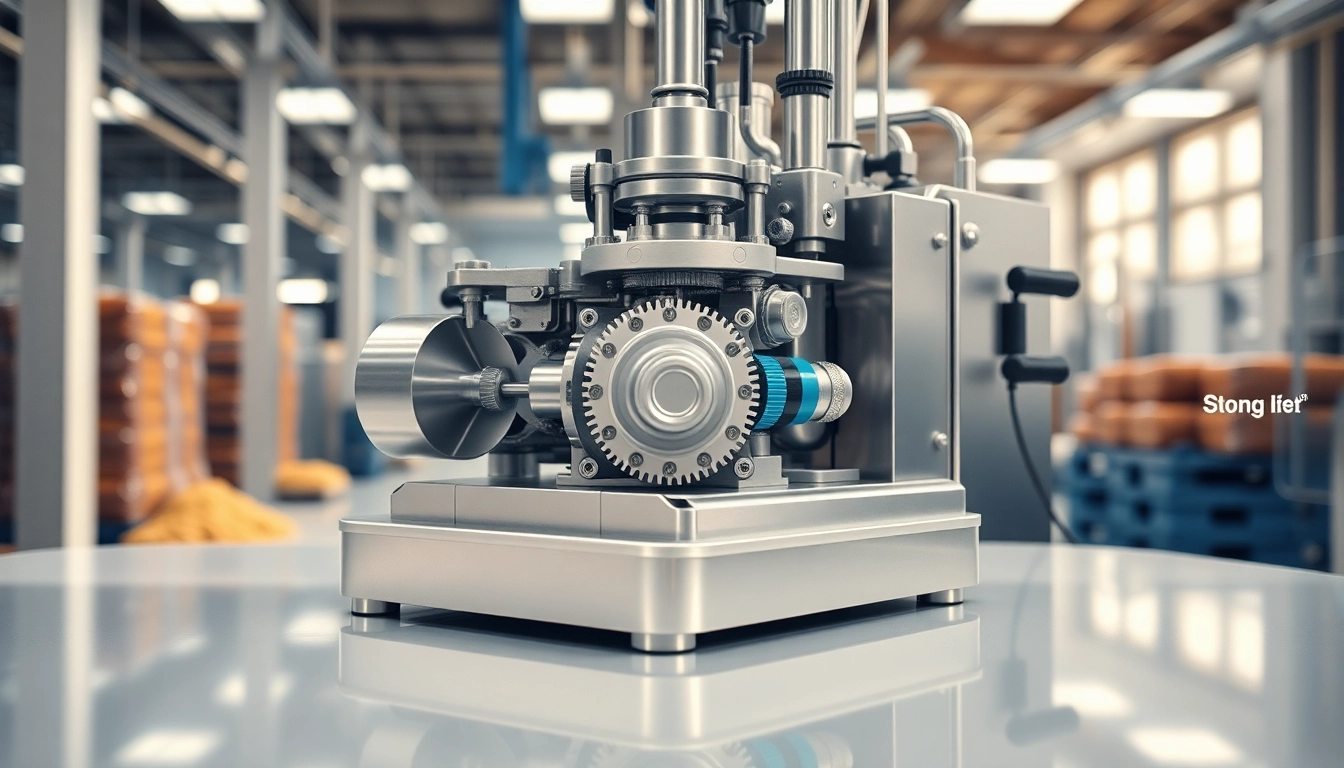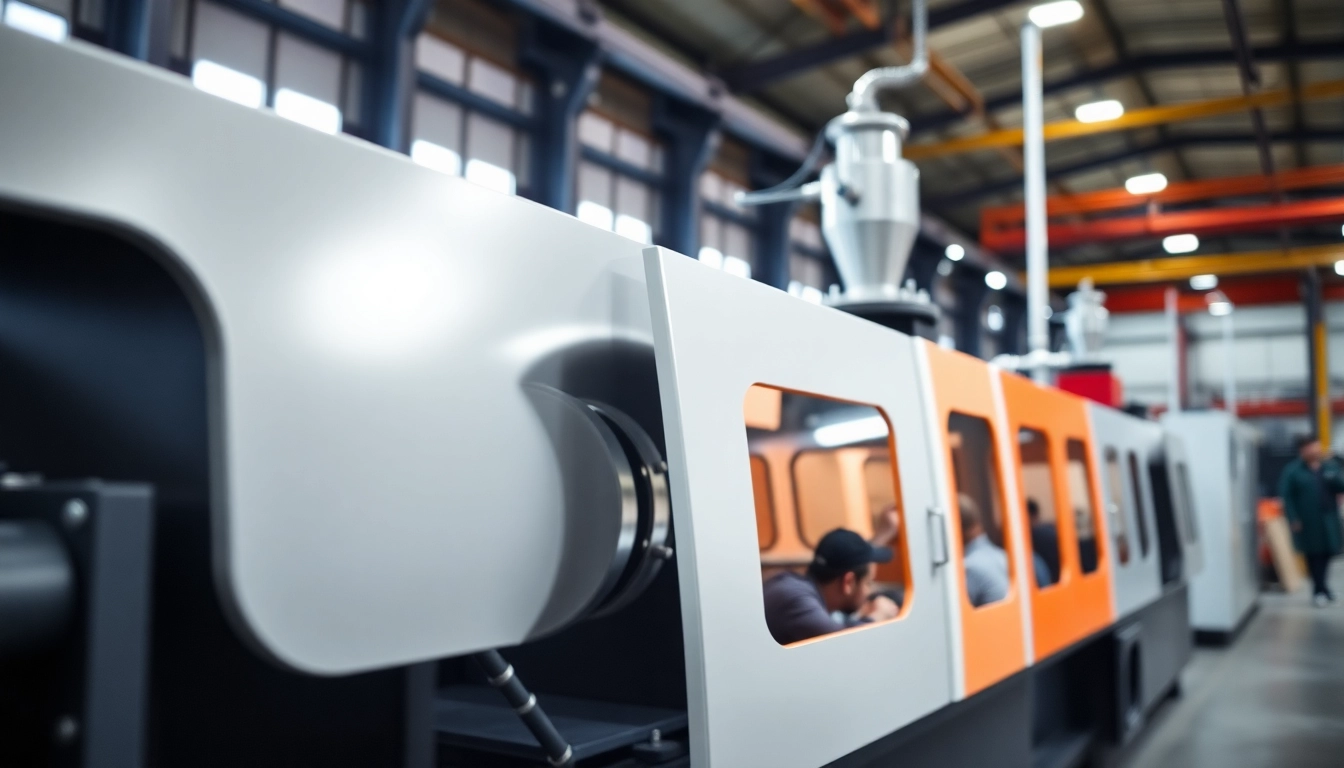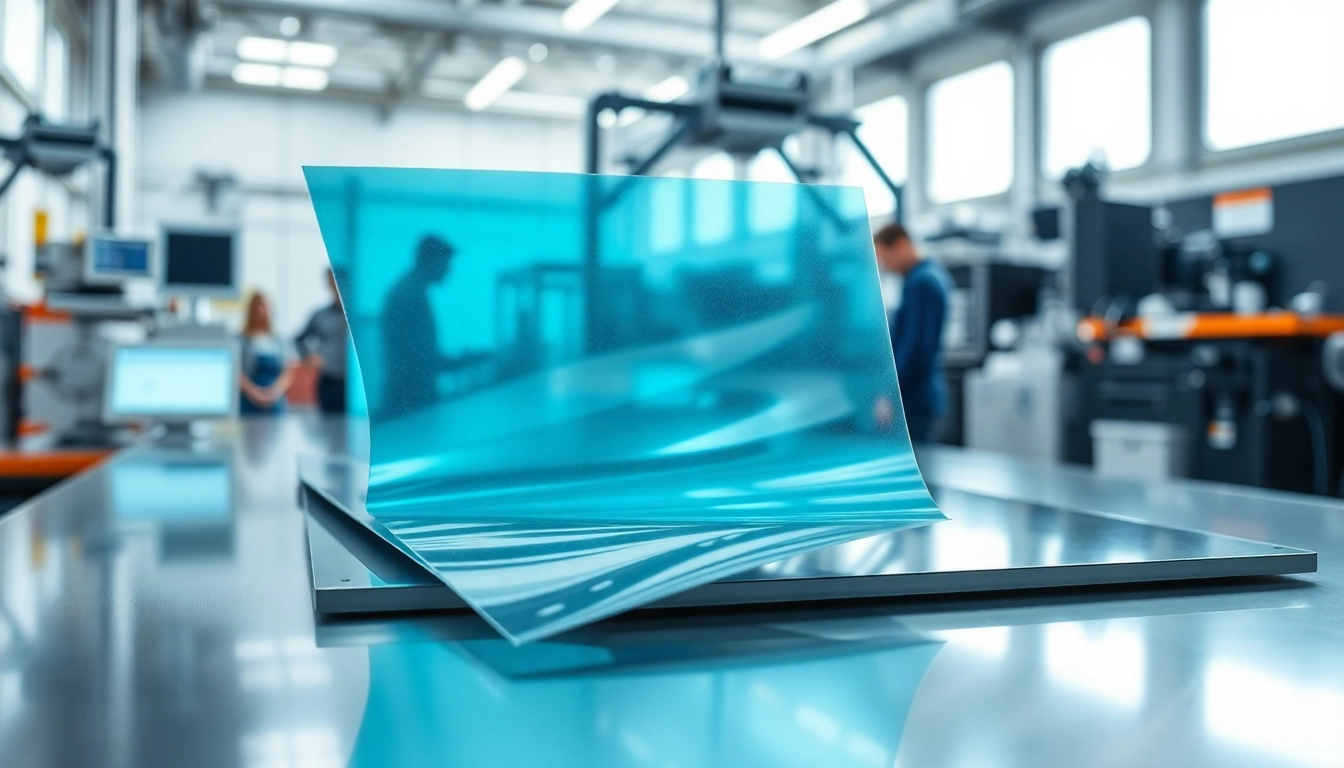Understanding Precision Die Cutting
Definition and Process Overview
Precision die cutting is a manufacturing process used to create specific shapes and designs from materials such as paper, plastic, metal, and foam. This technique involves the use of a sharp blade fitted within a die that is pressed or rolled against the material in order to cut out the desired shape. The precision of this method allows manufacturers to produce highly intricate designs with uniformity and accuracy, which is crucial in industries requiring exact specifications.
The die cutting process typically starts with the design and creation of a die. Computer-aided design (CAD) software is often used to develop the die profile, ensuring that it meets the exact dimensional requirements. After the die is created, it is mounted on a die cutting machine, where the material—often in sheets or rolls—is fed into the machine. As the die presses down, it cuts through the material cleanly according to the specified design.
This level of accuracy and efficiency is what distinguishes precision die cutting from standard cutting methods. It supports large production runs while minimizing waste, making it an ideal choice for businesses looking to optimize both their output and material usage.
For a deeper dive into the specifics of this technique, you can explore more about precision die cutting.
Key Materials Used in Precision Die Cutting
A variety of materials can be utilized in precision die cutting, each tailored to the specific needs of different applications. Here are some of the most commonly used materials:
- Paper and Cardboard: Widely used in packaging, marketing materials, and decorative items, paper and cardboard die cuts are common due to their versatility and ease of handling.
- Plastics: Materials like polyethylene, PVC, and acrylic are often die cut for products like containers, displays, and protective cases. Their durability and flexibility make them ideal for intricate designs.
- Foam: Used for gaskets, cushioning, and soundproofing, foam can be cut into various shapes and sizes, making it an essential material in numerous applications.
- Metals: Thin sheets of metals, such as aluminum or stainless steel, can also be die cut to create brackets, panels, and other components that require strength and precision.
Choosing the right material is critical, as it influences not only the performance of the final product but also the cost and sustainability of the process.
Benefits of Precision Die Cutting for Various Industries
The benefits of precision die cutting are extensive, impacting a wide array of industries. Here are some key advantages:
- High Precision: As the name suggests, precision die cutting offers tight tolerances, making it ideal for applications where minute details matter, such as in the automotive and electronics sectors.
- Cost Efficiency: This technique allows for large quantities of parts to be produced at a lower cost per unit, particularly beneficial for businesses with high-volume needs.
- Minimal Material Waste: The process maximizes the use of raw materials, allowing companies to save on raw material costs and minimize their environmental footprint.
- Versatility: Precision die cutting can be adapted for various materials and designs, making it a flexible option for industries ranging from packaging and healthcare to crafts and automotive manufacturing.
Types of Precision Die Cutting Techniques
Flatbed vs. Rotary Die Cutting
Understanding the different techniques of precision die cutting is essential for selecting the best method for your applications. Two of the primary techniques are flatbed die cutting and rotary die cutting.
Flatbed Die Cutting: This method involves a flat die that is pushed against the substrate, making it excellent for low to medium volume productions. The setup can take longer due to the need for precise alignment of the die and the substrate; however, it provides high precision and is ideal for intricate designs.
Rotary Die Cutting: In contrast, rotary die cutting utilizes a cylindrical die that rotates to cut the material as it is fed through. This method is best suited for high-volume production, allowing continuous operation and reducing lead times significantly. Rotary die cutting is commonly used to create labels, packaging materials, and other products requiring speed and mass production.
The choice between these two methods typically depends on the volume of production, material type, and design complexity.
Laser Die Cutting Innovations
Innovations in laser technology have influenced precision die cutting significantly. Laser die cutting utilizes high-powered lasers to cut materials into precise shapes. This method offers several distinct advantages:
- Complex Designs: Laser cutting allows for intricate patterns and detailed shapes that may be challenging with traditional die cutting methods.
- Material Versatility: Lasers can cut a wide range of materials, including those that are difficult to handle using conventional methods, such as certain plastics, thin metals, and intricate fabrics.
- No Tool Wear: Unlike mechanical cutting, laser cutting does not result in wear and tear of cutting tools, which can reduce maintenance costs and improve throughput.
- Less Material Waste: The precision of laser cutting leads to reduced waste, as the laser beam’s width is smaller than that of a traditional blade.
Laser die cutting continues to garner attention for its efficiency and adaptability, revolutionizing how manufacturers approach design and production.
Choosing the Right Technique for Your Needs
When deciding which die cutting technique to use, consider the following factors:
- Production Volume: High-volume productions are best suited for rotary die cutting due to its continuous operation and speed, while lower volumes may benefit from flatbed techniques.
- Material Type: The materials being used can dictate the method; for example, delicate materials may be better suited for laser cutting.
- Design Complexity: Intricate designs may favor laser cutting or flatbed methods, while simpler shapes can be efficiently handled by rotary cutting.
- Budget Constraints: Cost considerations often play a significant role in method selection. Flatbed cutting may offer a lower initial investment, while rotary may provide long-term savings for high-volume needs.
Applications of Precision Die Cutting in Business
Industries Leveraging Die Cutting Technology
Precision die cutting serves a multitude of industries, each reaping the benefits of this versatile manufacturing method. Some key sectors include:
- Packaging: Precision die cutting is fundamental in the packaging industry, enabling the production of custom box shapes, trays, and labels with high-quality finishes.
- Automotive: The automotive sector uses precision die cutting for various components, such as gaskets, seals, and interior trims, where exact measurement and quality assurance are critical.
- Healthcare: In medical device manufacturing, precision die cutting is essential for creating gaskets, seals, and various components that require stringent compliance standards.
- Textiles and Apparel: Die cutting is also applied in the textile industry for cutting patterns and components that will be sewn into garments and accessories.
Each of these industries benefits from the speed, accuracy, and cost-effectiveness of precision die cutting, bolstering their production capabilities.
Case Studies of Successful Implementations
Real-world applications of precision die cutting highlight how effective this method can be in various contexts. Here are a few striking case studies:
- Packaged Food Company: A leading packaged food producer switched to precision die cutting for their packaging solutions, enhancing design flexibility while reducing material waste and production costs. The company noted a 30% decrease in waste and a substantial increase in customer satisfaction due to the improved aesthetics of their packaging.
- Automotive Parts Manufacturer: An automotive parts manufacturer integrated rotary die cutting into their assembly line, realizing higher throughput and improved product consistency. The speed of production allowed them to meet increasing market demands effectively, scaling their output without sacrificing quality.
- Medical Device Producer: Another company in the healthcare sector adopted laser die cutting for their medical components, achieving unparalleled precision in their designs. This innovation reduced the number of defects significantly, which contributed to lower operational costs and better compliance with industry regulations.
Cost Considerations in Precision Die Cutting
Estimating Die Cutting Costs
Understanding the cost structure of precision die cutting is crucial for businesses looking to implement this technology. The primary cost components include:
- Die Creation: The initial cost of developing custom dies can vary significantly based on complexity, material used, and turnaround time. Generally, costs can range from hundreds to thousands of dollars.
- Material Costs: The price of raw materials directly impacts the overall cost of production. Businesses should factor in not only the price per unit but also how waste reduction strategies can affect the bottom line.
- Labor and Operation Costs: Skilled labor and machine operation costs are also essential to consider, as labor-intensive processes may spike operational expenses.
- Volume Discounts: It’s worth noting that higher production volumes often lead to lower per-unit costs, making it financially smart for businesses to plan for larger runs if possible.
Factors Affecting Pricing and Quotes
When obtaining quotes for precision die cutting services, businesses should be aware that numerous factors can influence pricing, including:
- Design Complexity: More intricate designs typically require more time and resources to cut, leading to higher costs.
- Material Choice: Different materials have varying procurement costs, which directly affect the final price.
- Production Volume: As mentioned earlier, larger volumes often yield lower costs per unit due to economies of scale.
- Finish Requirements: Additional processes such as printing or embossing will add further costs to the overall project.
Long-term Cost Benefits of Precision Techniques
While the initial investment in precision die cutting can appear significant, the long-term benefits typically outweigh these costs. Notable advantages include:
- Reduced Waste: Efficient die cutting techniques minimize material waste, which can result in substantial savings.
- Improved Design Flexibility: The ability to quickly adapt designs and start production can keep businesses agile and responsive to market demands, enhancing competitiveness.
- Enhanced Product Quality: High precision eliminates costly defects and returns, maintaining consistent product quality and brand reputation.
Future Trends in Precision Die Cutting
Technological Advances on the Horizon
The future of precision die cutting appears promising, with ongoing technological advancements. Some trends to watch include:
- Automation: The integration of automated die cutting systems will streamline processes further, allowing for quicker setups and reducing labor costs.
- Smart Technology: IoT-enabled devices will provide real-time data on production metrics, machine performance, and maintenance needs, enhancing efficiency and reducing downtimes.
- 3D Printing Integration: The convergence of die cutting and additive manufacturing may pave the way for hybrid solutions that combine the benefits of both technologies.
Sustainability in Die Cutting Practices
As sustainability becomes a priority in manufacturing, precision die cutting techniques are expected to evolve to meet these demands. Trends include:
- Eco-friendly Materials: The shift towards sustainable materials—like recycled paper and bioplastics—will influence die cutting products and processes.
- Energy-efficient Machines: The industry will see a rise in machines designed to consume less energy while maintaining precision, contributing to lower environmental impact.
- Waste Reduction Strategies: Companies will increasingly adopt practices aimed at minimizing waste during production, such as optimizing design layouts to maximize material usage.
Preparing for the Future of Precision Die Cutting
To remain competitive in the evolving landscape of precision die cutting, businesses should consider the following strategies:
- Continuous Learning: Staying informed about new technologies, techniques, and materials will empower businesses to make informed decisions.
- Adoption of New Technologies: Embracing automation, smart manufacturing practices, and sustainable initiatives will be vital for companies looking to future-proof their operations.
- Collaboration with Experts: Engaging with precision die cutting experts, suppliers, and industry bodies can facilitate knowledge exchange and innovation.
By considering these elements, businesses can enhance their agility and proactive stance towards changes in the precision die cutting industry.


